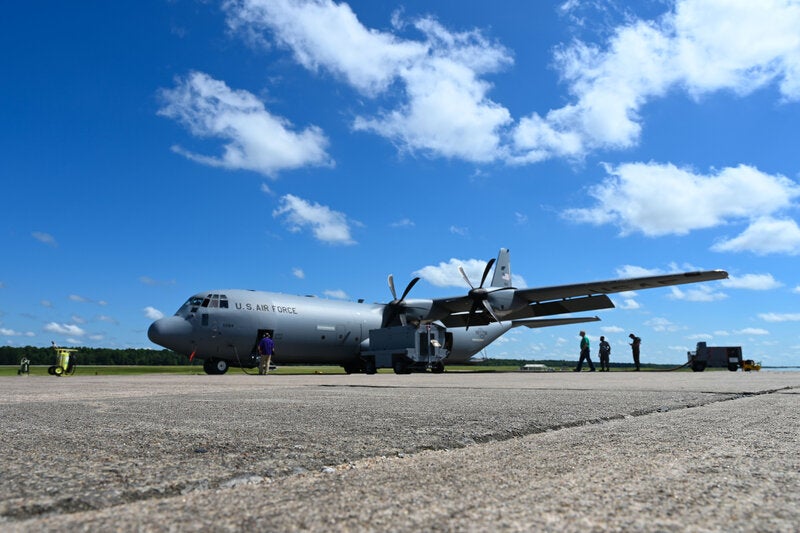
US Air Force (USAF) 711th Human Performance Wing’s chemical, biological, radiological, and nuclear (CBRN) analysts from Wright-Patterson Air Force Base (AFB), Ohio, have conducted the first vapour purge test on a cargo aircraft at the 19th Airlift Wing at Little Rock AFB, Arkansas.
Vapour purge tests were conducted to determine the time required for a chemical contaminant such as tear gas to be removed from an aircraft.
This cargo aircraft test forms a part of a series of experiments that the analysts will carry out on aircraft across the US Department of Defense (DoD).
The test is also aimed at finding out the potential best practice to efficiently reduce the number of chemical particles in the air.
During the test, a C-130J Super Hercules aircraft was filled with methyl salicylate using a custom-made pump.
Following this, advanced measurement tools were used to monitor the concentration of the chemical in the air and the time taken for the contaminants to purge from the aircraft’s environmental control system (ECS).

US Tariffs are shifting - will you react or anticipate?
Don’t let policy changes catch you off guard. Stay proactive with real-time data and expert analysis.
By GlobalDataUSAF 711th Human Performance Wing research bioenvironmental engineer Major Michael Horenziak said: “We’re introducing a chemical into the aircraft that’s a known stimulant for nerve agents and has been used on several other experiments across the DoD.
“We try to simulate the plane coming in sometime after it comes in contact with a chemical. After filling the plane with the particles, we measure how long the ECS system takes to create a safe environment inside of the aircraft for anyone on board.”
Using experiment results, analysts will be able to recommend equipment and uniform changes for aircrew in order to minimise their fatigue and provide them with maximum comfort while maintaining personnel safety and effectiveness.
Such tests were last completed in the 1970s and 1980s and now would be considered obsolete.
USAF 711th HPW senior CBRN analyst William Greer said: “The information that we learn from this will be used by the people who develop the next generation of aircrew ensembles, providing equipment that allows airmen to do their jobs more efficiently, more effectively and not suffer some of the encumbrances that come with the equipment we’re wearing now.
“The numbers from this are being measured with equipment that’s generations ahead of the equipment that was used during the original tests.
“There have been similar types of testing, but the approaches we’re using here, such as the equipment and the methods we employ, are giving us a much clearer picture of how the threat will affect aircrew both short and long-term.”
The vapour purge test aims to improve the operational capabilities of aircrew across the DoD in chemically contaminated environments.



